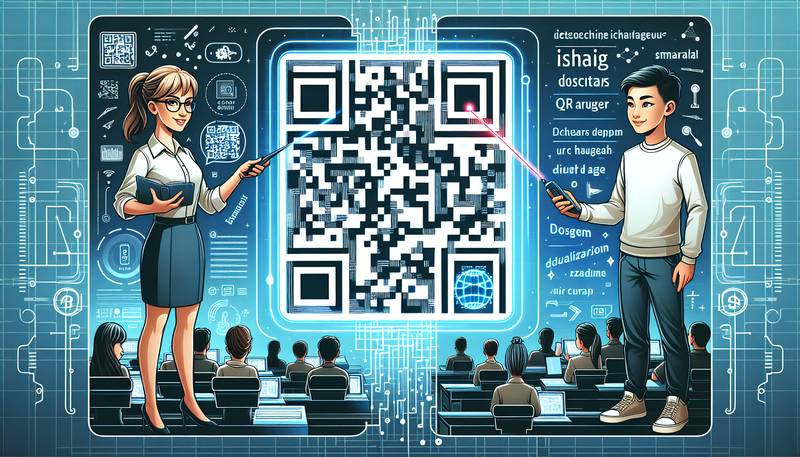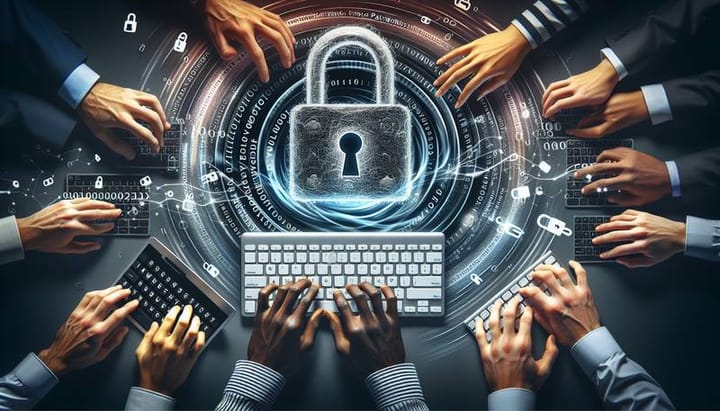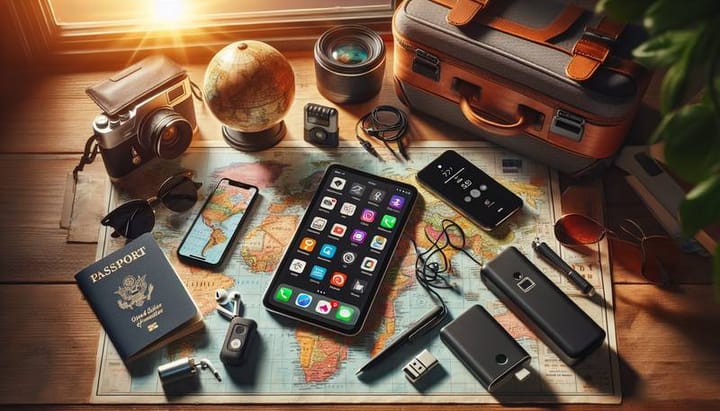Understanding and Using QR Codes: A Complete Guide

Welcome to the World of QR Codes
If you've ever been out shopping, dining, or just exploring the world and noticed a square barcode that looks like it came straight out of a sci-fi movie, congratulations, you've spotted a QR code! These quirky Quick Response codes are like hyperlinks for the physical world, connecting you to digital content just by scanning them with your smartphone. They can lead you to websites, reveal coupons, show videos, and so much more—the possibilities are practically endless. But what's the deal with these pixelated squares, and how can you use them to your advantage? Stay tuned, as we're about to embark on a journey of discovery that will leave you looking at QR codes in a whole new light.
The Origin Story: A QR Code's Tale
Every superhero has an origin story, and QR codes are no different. Our story begins in Japan in 1994 with a company named Denso Wave, a subsidiary of Toyota. Their mission was simple but challenging: they needed a faster way to track vehicles and parts during the manufacturing process—something barcodes just couldn't handle. Enter the QR code, which could store a lot more information and be scanned much quicker from any angle. While they started in factories, these codes soon spread across industries and oceans, reaching smartphones around the world and becoming an essential tool for interactive marketing and information sharing in our ever-connected digital age. They've come a long way from their industrial roots, turning into a global communication powerhouse.
Anatomy of a QR Code
So, what exactly are we looking at when we see a QR code? Let's dissect it. A QR code consists of black squares and dots arranged in a square grid on a white background. These patterns may seem random, but they're actually a form of binary code. Key elements include the finder pattern (three large squares at the corners, which help the scanner locate and orient the code), the timing pattern (a row of alternating black and white squares that determine the size of the data matrix), and the data cells (the tiny squares that actually encode the information). There’s also error correction built-in, meaning the code can still be scanned even if it's dirty or damaged. By knowing the layout, you can even start to recognize if a QR code is likely to be a URL, text, or other data types!
Creating Your Own QR Code
Ready to jump into action and create your QR code? It's easier than you might think. You don't need to be a tech wizard, and you won't need a magic wand—just a QR code generator, which is readily available online. Many of these generators are free and user-friendly, allowing you to input various types of data such as website URLs, contact information, or plain text. You'll often have options to customize your QR code with colors, logos, and shapes to align with your personal or company branding. Once you've input the required data and chosen your desired look, the generator will create your QR code, which you then can download and start sharing with the world. From posters to business cards, product packaging to digital screens—your self-made QR code can live almost anywhere and bring a touch of digital magic to your content.
QR Codes in Action: Real-World Applications
While their origin might be decidedly utilitarian, QR codes have found their place in almost every corner of our lives. Marketers love them for the ability to measure engagement and provide interactive experiences for customers. At your local cafe, scanning a QR code might reveal the daily specials or link to contactless payment options. In the art world, museum plaques with QR codes can provide visitors with more extensive information on their favorite exhibits. They’re even a fixture at memorials and graveyards, used on headstones to offer a digital remembrance of loved ones. During health emergencies, like the COVID-19 pandemic, QR codes have been indispensable for health check-ins and informational resources. From essential business applications to creative personal use, QR codes serve as a bridge between our physical surroundings and the digital realm.
So far, we’ve barely scratched the surface of QR codes. Next up, we’ll dive into how to get your smartphone to reveal their secrets. Stay tuned as our QR code quest continues!
Scanning QR Codes Like a Pro
Unleashing the power of QR codes is literally at your fingertips, thanks to the smartphone in your pocket. Most modern smartphones have built-in QR code scanners within their camera apps—simply pointing your camera at a QR code will often prompt a notification or link to appear, tapping it will whisk you away to your digital destination. No camera? No problem! There are plenty of free QR scanning apps available for download, offering additional features like history, favorites, and even security checks to ensure the link you're about to open is safe. Struggling to get a code to scan? Make sure you're in a well-lit area, the code isn't too small or far away, and that your lens is clean. With a little practice, you'll be scanning codes as casually as swiping through your newsfeed.
The Dark Side of QR Codes: Security Risks
With great power comes great responsibility, and that adage applies to QR codes as well. While most codes are benign, linking to menus, videos, or promotional pages, there's a chance of encountering a malicious QR code designed to compromise your personal data or security. Skimming through a fake payment portal or downloading a virus are potential risks when scanning unrecognized QR codes. So, how do you protect yourself? Exercise caution and common sense— if a QR code looks out of place, think twice before scanning. Use a QR scanner app with built-in security checks, and never input personal information unless you're 100% sure of the code's origin. As with any digital tool, a little vigilance goes a long way towards staying safe.
Future-Proofing: The Evolution of QR Codes
The future looks bright for QR codes, but like any technology, they must evolve to stay ahead. Innovations are already in the works, such as augmented reality integrations, advanced tracking capabilities, and even the potential for secure personal identification. QR codes could become even more interactive, maybe allowing users to engage with 3D models or access live streams by a simple scan. Payment and ticketing systems could become entirely QR-based, turning our smartphones into wallets and passcodes in a way that surpasses even today's capabilities. The beauty of QR codes lies in their simplicity and versatility, which will continue to drive their adoption and development well into the future.
From their humble beginnings as a tool to streamline vehicle manufacturing to becoming an essential aspect of our digital lives, QR codes have proven they're more than just a passing trend. They connect us, inform us, and sometimes even protect us. They've shown their value in both personal and professional realms, emerging as an innovative means to share information and experiences. Despite their technical nature, QR codes are incredibly user-friendly, and with a little practice and awareness, anyone can harness their benefits.
Now that you're armed with knowledge and appreciation for QR codes, why not create one for yourself, or go on a scavenger hunt for codes the next time you're out? Who knows what secrets and surprises await in those mysterious black and white grids. As we continue to push the boundaries of technology and integration into our daily lives, QR codes will undoubtedly be there, making our digital interactions smoother and more intuitive. So go ahead, take your newfound QR savvy for a spin, and watch the physical and digital worlds merge before your eyes. Have fun scanning!


